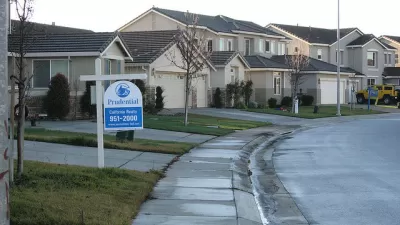A big data dump from Trulia, supplemented by helpful analysis, helps make sense of the U.S. rental market.

Online real estate company Trulia has released the results of its "semi-regular" look at rental process around the United States, producing this tried and true conclusion: "The rent is too damn high." The pace at which rent is getting more than too damn high is the shocking part of Trulia's findings, however.
Around the country, median rent rose 3.1%, while in some cities it rose nearly three times that average. "In fact, in Tacoma, Wash., Sacramento, Calif., Milwaukee and Los Angeles rents rose 8% or more based on our estimates," writes David Weidner in a written post that that explains the data.
When combined with data from previous years, we're talking about huge rises in rental prices. Around the country, rents have increased 19.6% since 2012. "Places like Cape Coral-Fort Myers, Fla., and Oakland, Calif., have seen increases of more than 50% since the end of the Great Recession," according to Weidner.
The article includes a lot of helpful infographics to help visualize the data, and a few other angles to understand the implications of rents rising. For instance, rising rents mean that in some cities buying a house and paying a mortgage is a better financial proposition than in others. Weidner also expresses hope that relief might be coming to some markets soon.
FULL STORY: The Rent Is Getting Too Damn High

Maui's Vacation Rental Debate Turns Ugly
Verbal attacks, misinformation campaigns and fistfights plague a high-stakes debate to convert thousands of vacation rentals into long-term housing.

Planetizen Federal Action Tracker
A weekly monitor of how Trump’s orders and actions are impacting planners and planning in America.

Chicago’s Ghost Rails
Just beneath the surface of the modern city lie the remnants of its expansive early 20th-century streetcar system.

Bend, Oregon Zoning Reforms Prioritize Small-Scale Housing
The city altered its zoning code to allow multi-family housing and eliminated parking mandates citywide.

Amtrak Cutting Jobs, Funding to High-Speed Rail
The agency plans to cut 10 percent of its workforce and has confirmed it will not fund new high-speed rail projects.

LA Denies Basic Services to Unhoused Residents
The city has repeatedly failed to respond to requests for trash pickup at encampment sites, and eliminated a program that provided mobile showers and toilets.
Urban Design for Planners 1: Software Tools
This six-course series explores essential urban design concepts using open source software and equips planners with the tools they need to participate fully in the urban design process.
Planning for Universal Design
Learn the tools for implementing Universal Design in planning regulations.
planning NEXT
Appalachian Highlands Housing Partners
Mpact (founded as Rail~Volution)
City of Camden Redevelopment Agency
City of Astoria
City of Portland
City of Laramie




























